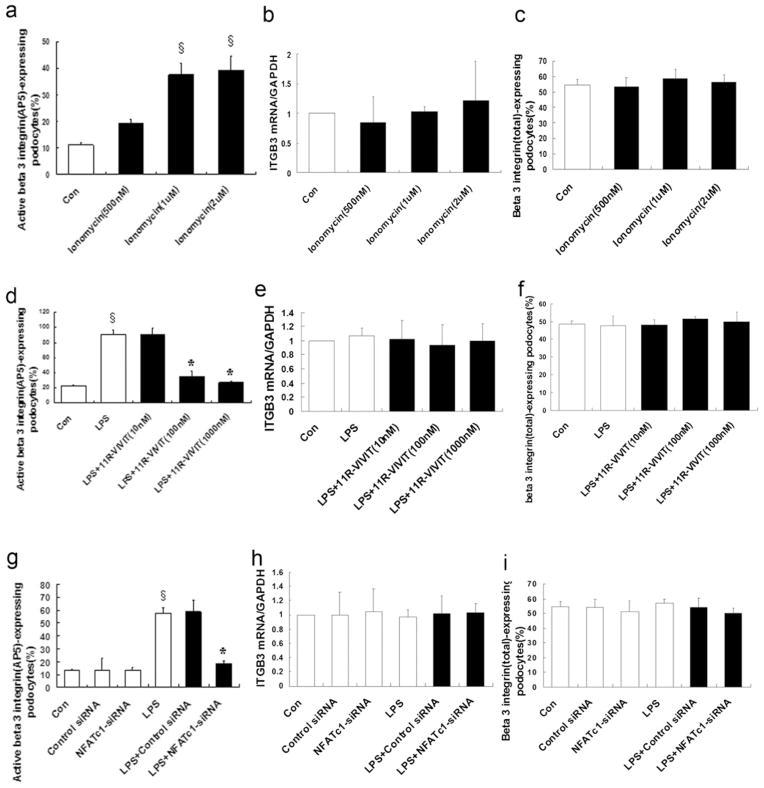Fig. 6.
NFATc1 affects β3 integrin activation, but not its surface expression. Ionomycin activation of NFAT was used as a positive control. Flow cytometry for ionomycin-treated podocytes showed that ionomycin (0.5–2 μM) activated β3 integrin (AP5 antibody labeling) in a dose-dependent manner (a) (p<0.01). However, ionomycin did not affect the expression of total β3 integrin mRNA (b) (p>0.05) or protein (c) (p>0.05). Same as ionomycin, LPS induced β3 integrin activation in podocytes (d) (p<0.01), but not the expression of total β3 integrin mRNA (e) (p>0.05) or protein (f) (p>0.05). Flow cytometry for 11R-VIVIT-treated podocytes showed that 11R-VIVIT (a NFAT inhibitor, 10–1,000 nM) inhibited the LPS-induced activation of β3 integrin in a dose-dependent manner (d) (p<0.01). However, 11R-VIVIT did not affect the expression of total β3 integrin mRNA (e) (p>0.05) or protein (f) (p>0.05). Same as 11R-VIVIT (a NFAT inhibitor), NFATc1-siRNA inhibited the LPS-induced activation of β3 integrin (g) (p<0.01), but not the expression of total β3 integrin mRNA (h) (p>0.05) or protein (i) (p>0.05). All values are expressed as the means±SD. §p<0.01 versus control podocytes; *p<0.01 versus LPS-treated podocytes

